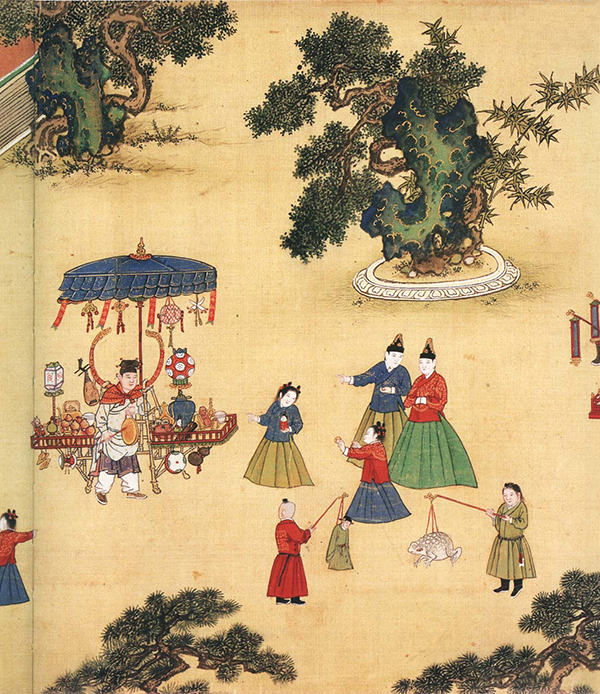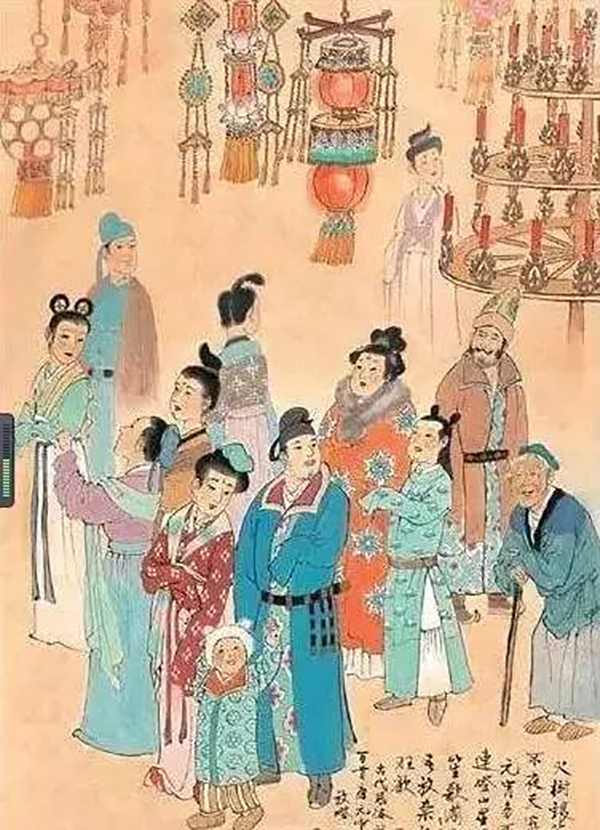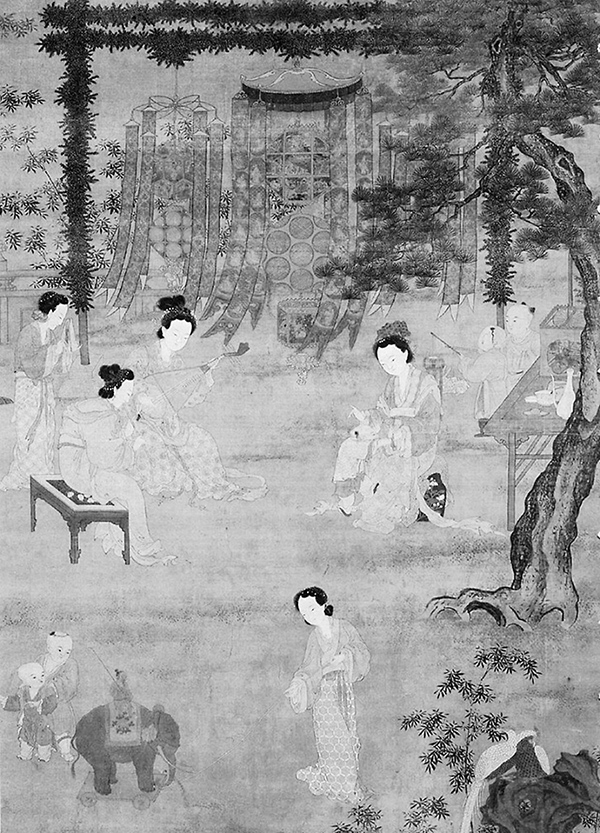A round of jade plate is round, and the Lantern Festival has arrived. Major shopping malls and online stores are carefully designed to be rich in Yuanxiao elements, and posters with large promotions are hung in conspicuous places to attract people to spend; Major time-honored brands have launched Yuanxiao with various flavors to satisfy people’s appetite; All the lantern festivals are ready to create a visual feast for people to take pictures and punch in. In the trend that people are busy paying for the "senses", festivals seem to be just a bright symbol, which puts people in a collective and irresistible consumption boom and writes the face of the times for us. What does the Lantern Festival mean to us? I can’t give an answer instead of this era. People finally got on the modern train, but vaguely lost a sense of belonging and friendship in the process of rapid progress.
At this time, looking back at the ancient Lantern Festival seems to be more helpful for us to pick up the remains.
Let’s talk about the word "Yuanxiao" first. Yuan, meaning "one", the first month is January of the lunar calendar; Night means night. Lantern Festival is the first full moon night every year. This section represents the revival of all things, and it is also a continuation of the New Year celebrations. Sima Qian founded taichu calendar in the Western Han Dynasty, and listed the Lantern Festival as a major festival.
After the Sui Dynasty, the Lantern Festival was called "Yuanxi" and "Yuanye". In the Tang dynasty, it was also known as "Shangyuan", and at the end of the Tang dynasty, it was occasionally called Yuanxiao. In addition to the name change, the activities of the Lantern Festival are also constantly enriched and developed. Since the Tang Dynasty, watching lanterns has increasingly become a necessary item for collective festivals, and the types of lanterns have gradually diversified. From the nine-story lantern wheel in Sui Dynasty to the lantern building in Tang Dynasty, there are lantern trees in Yuan Dynasty, animal lanterns and Aoshan lanterns in Ming Dynasty, all of which enrich the connotation of Lantern Festival. Visiting the lantern market and watching the lantern festival will become people’s entertainment and celebration ceremony.

Emperor Yangdi once described the grand occasion of the Lantern Festival in the palace in the poem "Building a lantern in the thoroughfare and rising to the south tower at night": "The Falun Gong turns in the sky, and the Brahman sounds in the sky; The lamp tree shines thousands of times, and the flowers bloom seven times. " During this festival, the emperor practiced Buddhism and prayed for Buddha, which was a lively and extraordinary scene. The heavy lights and trees brighten the night, and it’s beautiful if the fire is blooming! "It’s half a day on the Aoshan Mountain, and you can see the Phoenix Tower." "Aoshan" is a kind of Lantern Festival lantern scene. Thousands of colored lights are stacked into a giant Aoshan lantern as high as "half a day". This scene can be seen several times not only in the palace, but also in the world. At night, outside the palace wall, "a banquet is held in Jinli, and the blue cylinder is bright in the early years", "there are many days for tourists, and the bright moon makes the lights shine" and "the lights are shining and the bright moon comes one by one". At this time, the streets are empty, and the lamp market is as bright as day, even the bright moonlight is worse.
 The activities of appreciating lanterns in the Tang Dynasty were extremely prosperous.
The activities of appreciating lanterns in the Tang Dynasty were extremely prosperous.
Lantern Festival has gradually become a place for people’s social entertainment, breaking many taboos. Women and children have also gone out of their homes, "dressed in Chinese makeup, the lights on the sixth street make children." Women who don’t leave the boudoir on weekdays can point incense and thrush, meet their sweethearts and achieve many romantic stories. As described by Xin Qiji in "The Jade Case in Yuan Xi": "The moth and the willow are golden rays, and the laughter is faint and fragrant. The crowd looked for him for thousands of Baidu, and suddenly looking back, the man was there, and the lights were dim. " There is another famous saying: "On the Lantern Festival last year, the lights at the flower market were as bright as day. On the moon, the willow shoots, and people are about after dusk. " Touching agreement and tender love have become an eternal beauty talk.

In addition to watching lanterns, another important activity often appears in Yuanxiao’s poems — — Set off fireworks. "Thousands of trees bloom in the easterly night, and the stars are like rain." "Firewood and silver flowers are combined, and the star bridge is locked." Fireworks fly to the sky, scattered like stars and rain, adding a lively noise to the universe in addition to human voices.
The ancients looked up at the size of the universe and sent their feelings to the bright moon and stars; Looking down on the prosperity of categories and giving life interest, it shows unique interest and creativity as well as the aesthetic feeling of appealing to both refined and popular tastes in festivals.
As an agricultural country, China attaches importance to climate festivals, and the fifteenth day of the first month is regarded as an important node of the lunar calendar. In addition, there were many restrictions in ancient feudal countries. During festivals, people could break the taboos of the past, revel and release the hard work of the whole year into various entertainment activities. Lantern Festival is the combination of heaven and earth, reminding people to respect nature, fear the earth, conform to the laws of nature, constantly create under limited conditions, and condense their seriousness and focus on life in every move.
The beauty of poetry is not only that it carries these rich information about the times and life, but also that it can convey the unique and mature aesthetics of Chinese culture. The romance of poetry crosses the long river of time and brings people a touching experience with its conciseness and significance. In poetry, we talk about Yuanxiao, count the changes of customs and regain our cultural memory.
关于作者